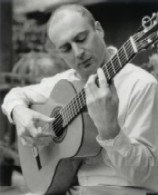Welcome to one of the most active flamenco sites on the Internet. Guests can read most posts but if you want to participate click here to register.
This site is dedicated to the memory of Paco de Lucía, Ron Mitchell, Guy Williams, Linda Elvira, Philip John Lee, Craig Eros, Ben Woods, David Serva and Tom Blackshear who went ahead of us.
We receive 12,200 visitors a month from 200 countries and 1.7 million page impressions a year. To advertise on this site please contact us.
|

|
|
Action and bridge height
|
You are logged in as Guest
|
|
Users viewing this topic: none
|
|
Login  | |
|

   
f.j.w.
Posts: 20
Joined: Aug. 20 2016

|
 Action and bridge height Action and bridge height
|
|
|
Hi All
My first flamenco build is progressing. I have put in the rosette and joined the back. Now I have to begin to construct the neck, and I have to decide the neck angle. As I have explained earlier I am a violin maker, and this is the first guitar that I am making. So I have a lot of beginner questions and you guys have been just amazing in regards to your willingness to share your knowledge. Thank you so much.
Here is my next question. It is about the relationship between the bridge height and action.
Just to be sure. I measure the action as the distance between the bottom of the string and the top of the 12th fret on the open string. I know that some people measure the action with the string stopped at the first fret, and there are VERY good reasons for doing so, but is seems that measuring with the string open is more common. The difference is exactly 0.2mm when I measure my teachers guitar. This is significant.
I have read the foro archives and there is a lot of talk about the action on the 6th string. It seem to be the consensus that the action should be between 2.8mm and 3.0mm. I have decided to aim for 2.8mm.
However there is nearly no mention of the action of the first string. On practically all the guitars I have ever seen the action is lower on the first string than on the 6th string. My question is then, what action would you recommend on the first string if the action on the 6th string is 2.8mm?
My other question is this: What should the string height be at the bridge? In the foro archives there are a lot of discussion of the string height at the bridge, and it the general rule seems to be that the string height should be between 7mm and 8mm, or the thickness of a cigarette. According to EU regulations the diameter of a cigarette must be exactly 7.5mm. However no one specifies the exact string height at the bridge under the 1st string and under the 6th string respectively. Does this mean that the string height under all of the strings are the same? On my teachers guitar this is not the case. The string height is 6.4mm under the 1st string and 7.6mm under the 6th string. A difference of 1.2mm, is this normal?
My next question is how the string height at the bridge and the action correlate. If the action is 2.2mm at the 1st string and 2.8mm at the 6th string, then the difference of the string height at the bridge must be exactly 1.2mm (if the fingerboard is even thickness). This is how my teachers guitar is.
However if the string height at the bridge is the same for all of the strings, then the difference of the action must be created by making the fingerboard thinner under the 6th string. To achieve a difference in action of 0.6mm the fingerboard must be 0.6mm thinner under the 6th string than it is under the 1st string at the 12th fret. Of course the thickness of the fingerboard must be the same at the treble side and the bass side of the fingerboard at the nut end. This is not the same as the difference in the thicknesses of the edges of the fingerboard at the 12 fret, since the fingerboard is wider than the neck, and therefore the difference in the thickness of the edges must be little greater than 0.6mm.
So what is the normal way to do this?
Option 1: To create the difference in action by making the bridge higher on the bass side.
Option 2: To create the difference in action by making the fingerboard thinner on the bass side.
Option 3: A combination of the above by making the bridge a little higher on the bass side, and making the fingerboard a little thinner on the bass side.
This may seem like splitting hairs, but the difference between a good set up and a bad set up is only a hairs width.
|
|
|
|
REPORT THIS POST AS INAPPROPRIATE |
Date Jun. 2 2017 15:48:50
 |
|

  
Anders Eliasson
Posts: 5780
Joined: Oct. 18 2006

|
 RE: Action and bridge height (in reply to f.j.w.) RE: Action and bridge height (in reply to f.j.w.)
|
|
|
It is very difficult to make a very good setup (perfect doesnt exist) by thinking. There are so many variables that cannot be meassured before building. example. How much will the neckangle settle when the strings are on? How much relief will the string pressure create? what about the difference between high and normal tension strings. How much will the soundboard lift etc!
The Spanish guitars is normally built spanish way. And that means adjusting along the road. The Spanish live like that. Not so much anymore but their whole culture and way of being is built on that.
So Neckangle has to be more or less right but its never totally the same. From there you adjust thickness of fingerboard, eventually you taper the fingerboard, and so on.
Stringheight at the bridge will never be 100% the same on all guitars from the same makers. All the makers I have seen have differences. But over time you will learn to predict more and more how things are going to be when finished and adjust while building. There´s no online course to teach that.
I can tell you that when building using a Spanish heelblock, little things like how well the sides are bent and how much tension there is in the back affects neckangle.
You could also build using a dovetail, like you are used to, but I´m sure you know from building violins, that the neck angle settles as well when strung up and after a while. Violins are evn worse than guitar in this case. At least that is my experience, but I have also built 30 times more guitars than violins.
So since its your first flamenco build, my advice is to start building, make the box more or less square and get the neckangle more or less right. Then start thinking about adjusting for the right setup.
BTW, I normally aim for 3mm 6th string, 2,7 1st string and 7,5 - 8,5 at the bridge.
_____________________________
Blog: http://news-from-the-workshop.blogspot.com/
|
|
|
|
REPORT THIS POST AS INAPPROPRIATE |
Date Jun. 3 2017 7:01:44
 |
|
 New Messages New Messages |
 No New Messages No New Messages |
 Hot Topic w/ New Messages Hot Topic w/ New Messages |
 Hot Topic w/o New Messages Hot Topic w/o New Messages |
 Locked w/ New Messages Locked w/ New Messages |
 Locked w/o New Messages Locked w/o New Messages |
|
 Post New Thread
Post New Thread
 Reply to Message
Reply to Message
 Post New Poll
Post New Poll
 Submit Vote
Submit Vote
 Delete My Own Post
Delete My Own Post
 Delete My Own Thread
Delete My Own Thread
 Rate Posts
Rate Posts
|
|
|
Forum Software powered by ASP Playground Advanced Edition 2.0.5
Copyright © 2000 - 2003 ASPPlayground.NET |
0.0625 secs.
|


 Printable Version
Printable Version






 New Messages
New Messages No New Messages
No New Messages Hot Topic w/ New Messages
Hot Topic w/ New Messages Hot Topic w/o New Messages
Hot Topic w/o New Messages Locked w/ New Messages
Locked w/ New Messages Locked w/o New Messages
Locked w/o New Messages Post New Thread
Post New Thread